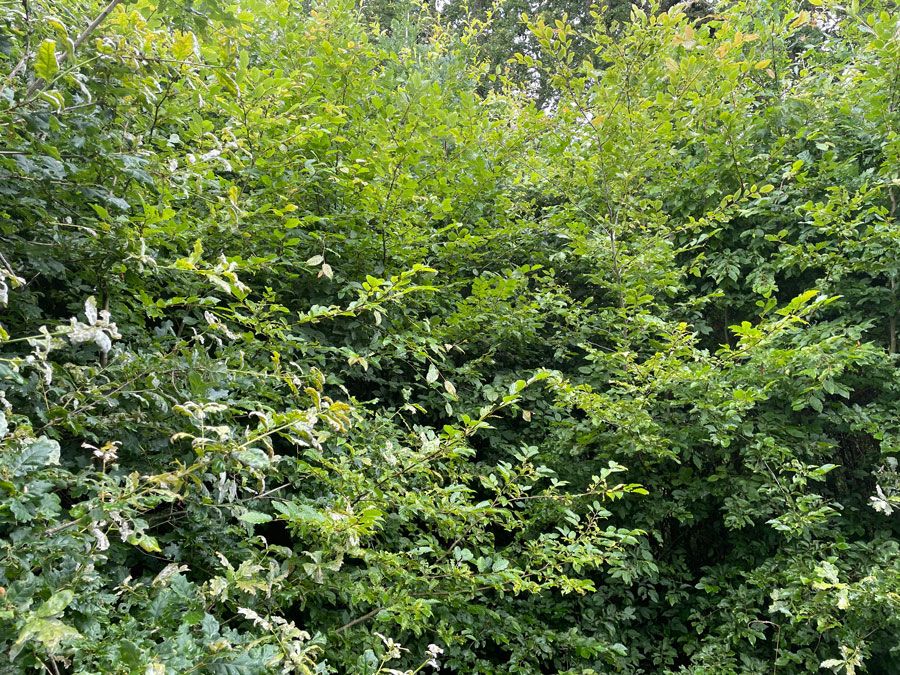
How I offset my CO2 emissions by planting trees
I was fed up of feeling guilty for consuming and traveling, so I decided to grow trees to absorb my CO2 emissions. I bought a piece of land in 2005 and 15 years later, that land is covered with 20,000 ten-year-old trees.
What is your carbon footprint?
Your carbon footprint is often presented as the sum of CO2 emissions related to the way you eat, travel, heat and consume.
Your carbon footprint is around 10 tons of CO2 emitted each year if you are an average western consumer.
If you are a Malian or Beninese, it is probably around 2 tons of CO2 emitted per year.
In reality, we should consider that your carbon footprint is the balance of your CO2 emissions and what you do to capture CO2.
In any case, this is what led me to think of ways to offset the CO2 emissions linked to my two annual trips by plane to the other side of the world.
So I looked into the amount of CO2 that trees were absorbing. Articles on the subject on the internet were rare at the time in 2005. I heard about a reforestation program initiated by Air France and I remember reading that two hectares of trees planted was enough to compensate for the CO2 emissions linked to my own carbon footprint that I had made on Coachcarbone.org, a website edited by ADEME and the Nicolas Hulot Foundation. I was emitting 7T to 8T of CO2 according to the estimates of this site.
The articles I had read at the time on CO2 sequestration by trees tended to indicate that I needed two hectares to capture these 7T of CO2.
I discovered that things were more complex.
Each tree family captures a different amount of CO2 which can vary from simple to double.
A newly planted tree captures almost no CO2 in its first years
Some trees grow faster than others,
Trees that grow faster also die faster (and therefore release CO2)
The sites where you can buy trees to offset your CO2 emissions sometimes (not always) lie about the amount of CO2 actually captured by the tree they sell you.
These sites only take into account the CO2 that the tree captures before being cut down (after 10 years, 15 years, 20 years?) and do not tell you that if the tree will then be used for heating (in which case it will release all the CO2 it has captured), the amount of CO2 that will be released by the unused parts of the tree (the branches that are too small, too twisted) which will then rot and release the bulk of the CO2
These sites do not include in their calculation the CO2 consumed to make the trees grow (transportation, machines maintaining the forest that run on fossil fuels).
These sites do not explain that often you buy a tree that replaces a tree that has just been cut down and that you are only replacing a tree that could have lived for a long time and kept its CO2.
Some species of trees are not very resistant to drought and may die as a result of global warming (the hornbeams on my property, for example, have a mortality rate of 1/200 during drought episodes).
To simplify things, here are some benchmarks.
The weight of the tree: in summary, 1 ton of tree captures 1T of CO2.
1 tree weighs on average 1 ton and releases it when it dies or is cut down
Some species like oaks live up to 500 years.
Oaks weigh more than other trees (more than a ton)
Before its fifth year, a tree only captures a few kilos of CO2 (while you emit 7T to 10T of CO2 per year).
So, if you plant 100 trees today, you will only compensate for 200, 300, 400 or 500 kilos of CO2 per year during the first years.
If you buy 100 trees at 20 € (that is 2000€), you will have the same result.
My recommendations to offset your emissions by growing trees
I think that you should:
- Plant trees to let them live at least 100 years.
- Plant species that grow slowly but have a long life span
- Plant trees without commercial considerations
To compensate quickly for CO2 emissions, we must grow 1000 trees per person (called to capture 5 T per year in 5 years, 10 T in 10 years, 20 T in 20 years, if we want to simplify).
Today, the field that I bought in 2005 and where the trees really started to grow in 2010, is covered with 20000 trees (a majority of oaks, a good proportion of hornbeams and a hundred other species in minority).
These trees being relatively young, I think they capture on average between 2kg and 10kg of CO2 each, that is to say a total of between 40T and 200T of CO2 per year, that is to say 5 times the sum of the CO2 emissions of my family (5 people) that is to say 35T and of my two companies
I am therefore compensating to pay back the carbon debt accumulated before starting to compensate.
I will complete this article later, but here are satellite photos of the field from 2007 to 2019.

